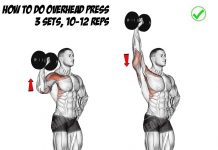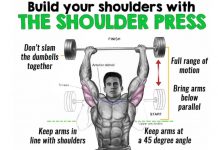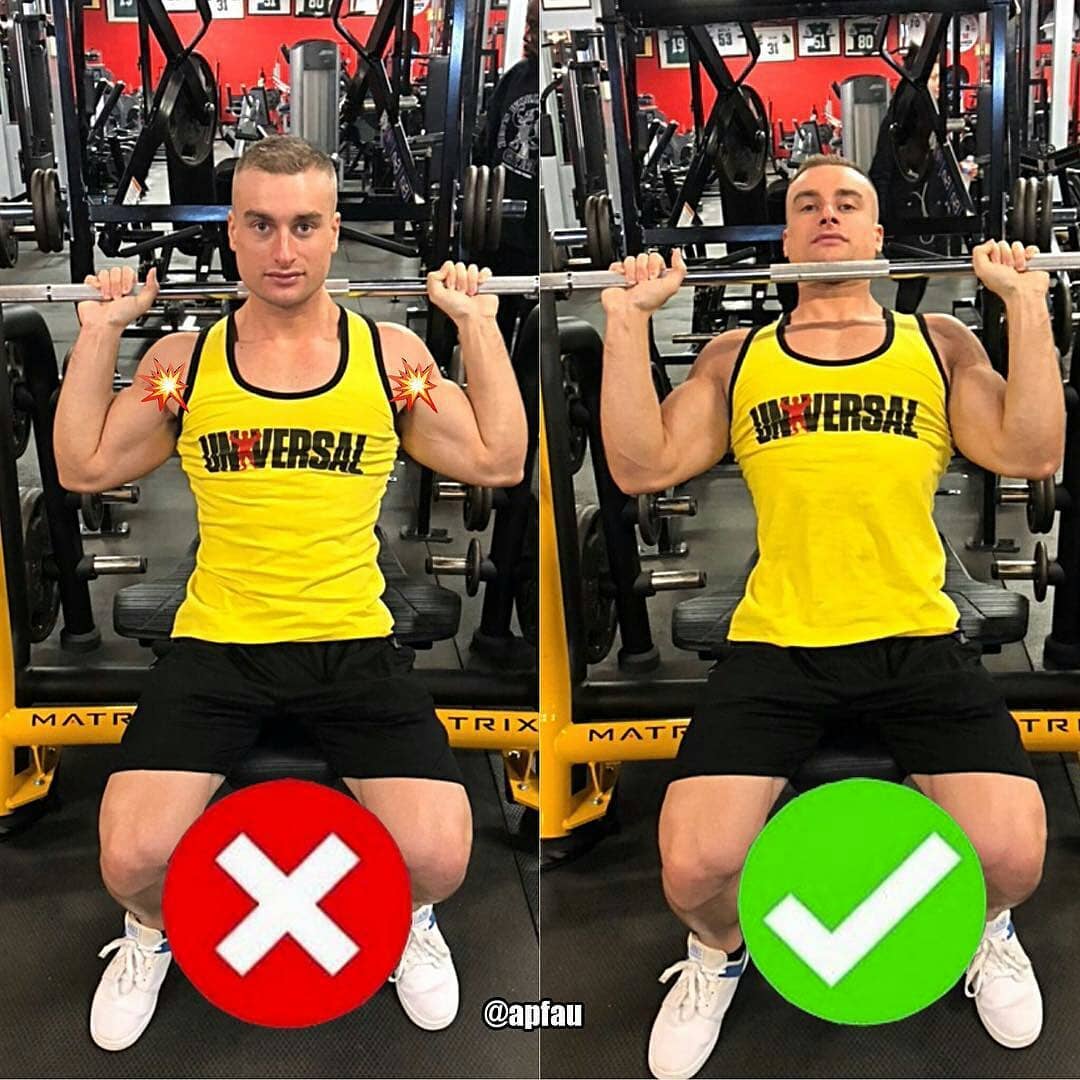How to Do Army Bench Press
Today we will consider an exercise the army bench press: the right technique, the elimination of errors!

[wp_ad_camp_1]
An army press (also called a barbell bench press or a classic bench press on the shoulders) is an excellent exercise aimed at developing the muscles of the arms and shoulders. At the same time, the athlete improves the support-cushioning qualities of his body.
Work of the Muscles in Army Bench Press
The barbell press from the chest in the army style (military, soldier) is the basic exercise. That is, when it is performed, several muscle groups work at once. The main load falls on the deltoids – the muscles that surround the shoulder joint. The back, front and middle beams are involved in the work. The maximum is used for the front, the minimum for the rear.
Regular training of deltoids makes the shoulders visually strong and wider. In addition to the shoulders, the movement uses triceps (you stretch your arms when you lift the bar in front of you) and the upper part of the large pectoral muscles.
For the stabilization of the body during the exercise, the muscles of the press, back, legs and buttocks are tense. If you are doing a bench press sitting on a bench with a support on the vertical backrest – the load from the feet is removed completely, and on the back it more stronger. In general, bench shoulder press is a somewhat easier and safer version of the exercise.
The advantages of army press
[wp_ad_camp_2]
As it follows from the name, the army bench press is a traditional element of the physical training of servicemen. The name came from the English language, but it was fully adapted among athletes in the exercises.
The functionality of exercises in the case of military training is in the first place.
Standing (Raise barbell above your head) allows you to increase the strength of the vertical thrust from the shoulders, which allows you to effectively lift up the fighters, when required.
For example, to overcome high obstacles, or when you need to get into a high-placed window.
Exercise is executing out standing (Army bench press – its simplified version), when you sitting the weight of the bar rests on the whole body.
But when’r you stand need to maintain balance throughout the exercise. This allows you to develop muscles that stabilize the position of the human body in an upright position.
As a result, the muscles of the legs, back, and lower back are strengthened. Since the army bench press is using triceps (this was mentioned above), it will be useful also during the fight, when it is necessary to push the opponent away from him.
Thus, the army bench press (also a standing army bench press) is the basic exercise for the fighter.
Civil sportsmen are interested not only in the strength of the muscles and in enhancing the capabilities of their own body, but also in the harmonious shape that is achieved through the development of the shoulder girdle.
In fitness gym, athletes perform a army bench press over the head both standing and sitting. Both options well are pumping a shoulders.
[wp_ad_camp_4]
- The First (standing army press) for experienced athletes
- Second (army bench press) is good for beginners or people who have problems with the spine.
If you consider the a front army bench press of you as an element of strength training, then there is a push, a jerk, and braking due to the damping of the feet.
About this in more detail in the technique of execution.
The Technique of performing an Army Bench Press:
- The barbell should be at a level just below your shoulders, so that you can take it off.
- It should be convenient for you to remove it from the racks, avoiding lifting on socks.
- The position of the arms should be on the width or slightly wider than the shoulders.
- Elbows pointing down, palms pointing up.
- Go under the bar until you touch the neck, put your feet on the width of the shoulders, feet in parallel, you can slightly dilute the socks to the sides.
- Grasp the barbell, as described in Point 3. The barbell should be located on the collarbones, and on each side of them be fixed on your palms.
- Legs bend in the knees for depreciation.
- Raise the barbell up in front of you, lifting it above your head. The bar should be on the same axis with your head, pelvis and heels. If the barbell is deflected elsewhere – you are doing the press above your head incorrectly!
- Lower the bar back onto the clavicles, slightly sitting down, when the bar touches them.
- Movements are made with moderate speed, not slowly, but also not fast. From the outside it looks like jerks, but it’s not.
- Each movement must be completely controlled by the athlete.
- Do 10-12 repetitions in three approaches.
Tips & Benifits
- Change the grip width. This helps to load muscles of different types. You should also change the position of the body.
- Use army bench press as a basic exercise. This rule means that you need to perform the bench press as correctly as possible and “all the way.”
- Correctly select the working weight. Only with the right weight can an effective development of the deltoid muscles be achieved.
- Doing exercises with dumbbells, change hands. The Army bench press can be performed both with two hands, and in turn.
- Perform the exercise more often while sitting. In a sitting position, the load on the spine and lower back is not as high as it occurs with standing exercises.
- Use a simulator if possible. It will provide a comfortable trajectory and protect joints from tension.
[wp_ad_camp_5]
- Observe safety precautions. If the athlete has revealed pathologies of the spine or old injuries, standing army press is not recommended. It is also forbidden to tilt the body back, as this can damage the spine, which is subject to heavy weight.
- Do not force repetitions. This increases the fatigue from the exercise and reduces its effectiveness.
- Strictly fix your hands in the desired position. This approach allows you to work effectively with weight and perform army bench press while standing or sitting.





















































